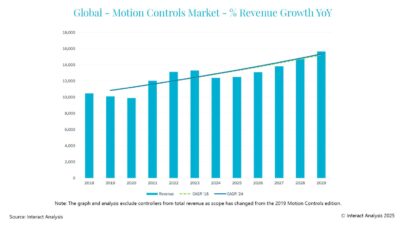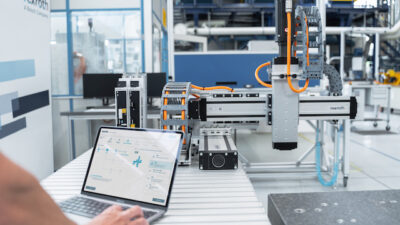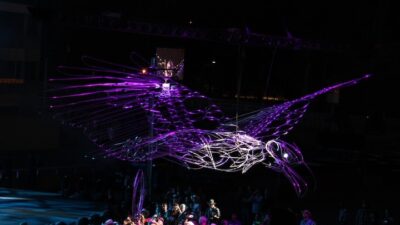The promise of open control can also be a curse. Control engineers have the ability to choose hardware, software, and networking products that best match application requirements. Since all vendors pledge their products are "open," this automatically means there will be no problems hooking it all together and making it run with no more than the usual start-up bugs.
|
The promise of open control can also be a curse. Control engineers have the ability to choose hardware, software, and networking products that best match application requirements. Since all vendors pledge their products are "open," this automatically means there will be no problems hooking it all together and making it run with no more than the usual start-up bugs.
Actually, this could be a bad assumption. The benefits are there, but making it work can be a trek through a jungle maze with many traps and engineer-eating beasts along the way. Fortunately, many have already made the trip successfully and left the trail marked with advice for those making their first journey to open control. The lone engineer can put together a system with many suppliers and system integrators standing by with a helping hand in case of a stumble.
A control system contains hardware, software, and networking components. Each component must be evaluated both separately and how each acts within a system. The controller platform contains plug-in cards ranging from video to communications to special purpose like vision or motion. Choice of an operating system (OS) is crucial whether the readily available Microsoft Windows NT, one of the real-time operating systems available (see CE , February 1998, p. 66), or even Linux. Several software applications will be running on top of the OS, and communications to other applications has become mandatory. Network communication to I/O devices and information systems requires choices of physical media as well as protocols and configuration software. Whew! How does all this happen?
Begin with a plan
The most important thing to do once the decision has been made to implement an open control solution on a project is to make a detailed plan. Begin with a complete set of requirements for the machine, process, or manufacturing line. Look at the work that must be done, then analyze what information must be gathered and shared, and finally determine what hardware, software, and networks will do the job.
Scott Kiser, senior product marketing manager for Wonderware (an Invensys company, Irvine, Calif.), has worked with many customers in machine control, process control, motion, and vision. He notes, "The applications were all different, but there was one consistent rule of thumb to a successful implementation: customer and integrator must have a goal in sight. Products must be picked around the goal. For instance, different industrial buses have different strengths. If you have an application with multiple axes of motion, don’t pick a bus that is not optimized for block transfer. Finally, know exactly where the responsibility lies in system start up and debug."
MDSI (Ann Arbor, Mich.) produces open CNC systems and began by retrofitting older machines. President Jim Fall says the experience taught the company about successful implementation. "Project management skills are very important," he says. "We make a point to work with customers to develop a plan. One of our integrators met with customer engineers developing a new gear hob control. He asked them what an ideal gear hob would be like. From that analysis and detailed product plan, the control system was designed, pulling in the best components into an open system. The new system cut cycle time in half, so the benefit came from both using an open system and from figuring out just what the machine should be doing."
Paul Baracos, Ph.D., P.Eng., and AlterSys (Longueuil, Quebec, Canada) strategic research director, says the most important thing is "spending enough time on project analysis and system architecture design. Starting the project with the right architecture is essential to ensure seamless integration of components and functions.
"These decisions are greatly affected by floor operations (sensors, actuators, touch screens, hand switches, and so on)," he adds, "and [by] the need to isolate systems from each other in case of failure of a computer. The system must be designed properly, otherwise, the advantages of open control will be lost."
Jerry Koch, software product manager at CTC Parker Automation (Milford, O.), states, "Evaluate the application goal, pick tools that fit, and remember that information flow is critical since it’s the reason most people pick open systems in the first place."
Manage Risks
Certainly one part of planning a system is to manage potential risks. Bob Rucinski, GE Fanuc Automation (Charlottesville, Va.) manager of product integration team suggests looking at the various components that may be used. Ask questions of each one like, how mature are the products? How long have they been on the market? Does it have an installed base? In what applications has it been used? What are its interfaces that make it open? He adds, "Part of the up-front process is to determine what is critical to the machine, process, and whole business. If you don’t have experience with this type of analysis, then look for someone who can lead you through it—especially the first time."
Also pointing out the importance of system risk tolerance is Steve Conquergood, president of Advanced Measurements Inc. (Calgary, Alberta, Canada), a National Instruments Alliance member. "Successful design of any new system depends greatly on knowing whether it needs to be ‘bullet-proof,’ or what degree of faults can be tolerated. Specifying and clarifying user’s expectations with regard to operations and fault levels is very important."
Donny Goff, industrial communications software engineer at National Instruments (Austin, Tex.) R&D, nominates another important consideration during the planning and specifying stage of the project—adherence to standards. "Open standards like OPC, OMAC, FOUNDATION Fieldbus, and DeviceNet, to name a few, can save significant time to bring a project to completion."
National Instruments’ experience implementing open systems through its Alliance members and customers reveals several other experiences. Project engineer Herve Milcent of CERN (Geneva, Switzerland) notes OPC capabilities sped up development of a liquid distribution supervisory system. Data Science Automation (Pittsburgh, Pa.) engineering vp, Jay Grassell says, "One of the biggest challenges is being able to easily accommodate a variety of potential data sources. The ability to communicate via standard SQL commands on ODBC data sources is key."
Mark Devonshire, CNC marketing manager at Rockwell Automation (Mayfield Heights, O.), also believes standards to be crucial. He says, "Build in complete diagnostics from the start. To assure success, select systems with pre-tested components and avoid an integration team that has only PC or only application knowledge."
Varieties of computers
Controller hardware platforms may be built from a conventional personal computer although perhaps hardened for industrial use. Several specialized computer platforms have been developed either to reduce cost, like PC/104, or for high reliability industrial use, like CompactPCI.
Mike Rothwell, Advantech Automation (Cincinnati, O.) business development manager, offers this advice for open hardware selection, "First, stay with standards that are well-established, for instance, PCs with standard plug in boards. For OEMs with customized software, qualify that software on a new platform before investing in it. Find out how the supplier handles BIOS changes. You need to have advance change notification and a procedure to prequalify those changes. In other words, choose your partners carefully."
Mike Willenborg, president of Willenborg Associates and LeBlond Service (Imlay City, Mich.) and an MDSI integrator, adds, "The strongest advice I can give is to avoid buying the cheapest PC. Buy for reliability. For instance, Intel chips have a high rate of quality. Pay attention to the power supply. A cheap power supply will let you down. Then, configure the system with a network to a server to minimize or eliminate need for rotating storage."
Tom LeBay, Xycom Automation (Saline, Mich.) application engineering director, advises, "PC hardware needs to be protected. Determine appropriate levels of ‘industrialization’ for the location. Get NEMA 12 level of protection for screens and computers and go up to NEMA 4/4X for protection against liquids and corrosives. Assure backup power supply capabilities. Consider interference with other electrical equipment in the area. Finally, protect PC hardware against high ambient temperatures found in many industrial locations."
Make sure you have the right resources and training to handle the task, recommends Mike Sims, product manager Rockwell Automation Industrial Computer Business Unit. "Consider hardware platform requirements for memory size and processing power. Even though today’s computers are lightning fast, systems can be loaded quite quickly while running multiple applications. Designers should consider worst-case software load—including soft control engine, operator interface, networking, data logging, and local spread sheet or document editing."
Software must communicate
Nat Frampton, president of Real Time Development Corp. (Slidell, La.), is an integrator specializing in open software development. He says, "First select an operating system. It may be Windows NT for typical PC-based control, but you may pick Windows CE or Embedded NT for embedded control systems. Choose from the end-user’s point of view toward requirements for communications, database, extendibility, real time, and graphics. A critical design issue is information flow. OPC servers are a de facto standard. It is important to buffer and isolate data with databases serving as the interface between producers and consumers."
States Kevin Gordon, senior software architect at Rockwell Software (West Allis, Wis.), "Building an open system requires that the designer maintains true ‘openness,’ or the ability to interact within or among software applications independent of the application itself." "This means adopting commercial and/or industry standards. Examples include ActiveX, OPC, ODBC, and VBA. Consider each of the following features while designing the software part of the system: extensibility, interoperability, portability, scalability, and modularity."
Adds Gary Marchuk, Think & Do Software (Ann Arbor, Mich.) sales & marketing manager, "Consider three things when selecting software for open control. First, keep in mind the level of integration of features you will need (logic, HMI, motion, etc.). Then consider the degree of integration of hardware platforms. Make sure the combination of hardware and software integrates well. Finally, make sure the system supports all communications standards from I/O devices to enterprise systems."
Iconics (Foxborough, Mass.) vice president, Chuck Gillingham, notes, "Avoid systems where a distributed tag database across multiple servers is not supported, particularly on larger applications. In this way, the final system will enable the ability to view data anywhere at anytime."
Networks are crucial component
Open systems would probably never have happened without standard networks. There are many networks with open vendor associations to guide development of standards. Some of them are DeviceNet, Profibus, ControlNet, Interbus, and FOUNDATION Fieldbus, not to mention device level buses like Seriplex and AS-Interface. A network borrowed from commercial applications that is making market share gains is Ethernet. Its installed base is so large that many necessary components are much less expensive than competitive industrial ones. Whether it is robust enough for industrial use is still hotly debated, but it already has many users.
Benson Hougland, Opto 22 (Temecula, Calif.) director of technical marketing, advises considering business objectives when specifying an industrial network. "One objective is open connectivity to a wide range of plant-floor devices. Data sharing and gathering is another. Additionally, flexible infrastructure enables keeping pace with technology advancements. There are several application standards, each fitting special purposes, and all work over TCP/IP. FTP is an excellent file sharing protocol, while SMTP works for communications between e-mail systems."
Larry Komarek, Phoenix Contact (Harrisburg, Pa.) systems group manager, advises, "Attend hands-on training classes for several bus systems. Each system has its tradeoffs and design considerations. There is variability in software configuration, cabling layout constraints, and factors like how future expansions are impacted by baud rate, distance, and number of devices. The few days invested in training will be time well spent."
Karl Meihofer, US automation marketing manager for Transparent Factory for Schneider Electric (North Andover, Mass.), recommends, "Don’t just buy cheap PCs with browsers and plug into the network. And security is a critical issue to address. If there is remote access, have a firewall and leverage commercial Internet security applications. Be sure to have a good password policy. I wouldn’t expose the first system to the Internet until you have built up administration experience. Finally, separate the control, real-time portion of the network, from the IT part. This can be physical, as in two Ethernet ports on a controller, or can be through smart devices that know the difference between the request over Modbus over TCP/IP versus HTTP."
Support your local project
Dave Quebbemann, Omron Electronics (Schaumburg, Ill.) industrial automation marketing manager, suggests looking for product platforms that provide flexibility and making sure defined protocols have capabilities that meet system requirements. "But even more," he adds, "choose a partner with application engineers that understand how the various products work. Sometimes this is even part of the bid package."
Another way to get some assurances is to procure a bundled solution from vendors that can assure various hardware, software, and network components work together—or are there to make them work. Although larger suppliers can do this mostly within the company, there are ways to source from others that specialize in various areas. Wayne McGee, vice president of SBS Technologies Embedded Computers (Raleigh, N.C.), points out that SBS has a bundled solution on its computers with Steeplechase Software (Ann Arbor, Mich.) control software. These products, along with add-in cards from Synergetics (networking, Downers Grove, Ill.) and Motion Engineering (motion control, Santa Barbara, Calif.), are tested to assure interoperability.
Blessing or Curse? There is no doubt that open systems have been a blessing in many applications. The number of successful implementations is growing along with their diversity. Avoid the curse, however, with planning and finding that good partner.
Network configuration software gets system running quickly
North Sails Inc. (Minden, Nev.) recently introduced a manufacturing technique for making sails that target high-stakes racing yacht customers. The process is an electronic mold simulating the convex "flying shape" of a mainsail. This computerized working surface assures the lamination process cures sails in the same load stress distribution pattern that it will experience on the high seas. The mold achieves its shape through molre than 200 screw-type pneumatic pistons acting in concert form the elastic membrane to its computer-modeled shape in just 15 minutes. The system uses over 1,200 I/O devices, Simatic PLCs, a Siemens R145 computer, and a Profibus DP network.
The work to set up a network of this magnitude was expected to take evenings and weekends for several weeks. Actual set up and configuration time was less than one hour. The Microsoft Windows-based Siemens Profibus configuration software installed quickly. Upon boot up, it asked if it should find and install all hardware connected to the network. With a click on "Yes," the program went to work flashing dialog boxes with each of the components found.
Vendors are building network intelligence into their field devices. This "Plug ‘n’ interoperabilityPlay" capability is tapped by configuration software greatly reducing setup time.
Avoid the Curse/Achieve the Promise of Open Control
Check these items before undertaking that first open system implementation:
Standard operating system
Understand key performance measures
Build in diagnostics
Determine best network cabling
Build in ability to extend system
Consider bundled systems
Enlist network expertise from IT dept.
Choose software for interoperability
Enough computer power and memory
Look at ease of software configuration
Project management skills
Complete definition of project
Pick partners carefully
Source: Control Engineering
Open control pioneer
Engineers at NCP’s South African food-acid plant decided in 1997 they wanted an open, PC-based system capable of distributed data acquisition, on-line programmable real-time process control and PID regulation, operator interface, logging, trending, alarming, and remote access. And they wanted local control on a familiar PLC platform. In other words, they wanted an open DCS built from PCs and PLCs.
The secret to a successful open control system platform is selecting an integrator who will provide a seamless solution. NCP chose Microlab (Johannesburg, South Africa).
First came the hardware platform choice. There are many varieties of PC platforms from standard ISA, to PC/104 to CompactPCI. Microlab chose OC586 open controller from Allen-Bradley. This controller is actually a PC disguised in a PLC form factor. This gave PC hardware with industrial strength.
Software requirements included having open interfaces while small enough to fit in a 20 MB flash drive. It also had to run 24 hours per day, 365 days per year without a required reboot. Virgo from AlterSys (Langueuil, Quebec, Canada) was chosen.
Initial system architecture included two Allen-Bradley open controllers each controlling about 600 Flex I/O points and Burkert intelligent valves. Three desktop computers provided production management and reporting, operator interface, and system configuration.
As is typical with control systems, plant operators soon wanted more functionality added to the system. Since the processors were already loaded to capacity, it seemed the expansion would be a big problem. Not so with open systems. On-line scalability was built into the system so that new nodes could easily be added and control could be shifted to the new nodes without shutting down the system.
System integrator, Miro Zaric, says, "We haven’t merely connected an HMI to a PLC. Virgo is actually embedded in the open controllers, executing real-time control and transparently sharing data. I like to think of it as a firmware upgrade transforming a PLC into an open DCS. Virgo also enhanced productivity through its screen builder and standard soft logic languages."



